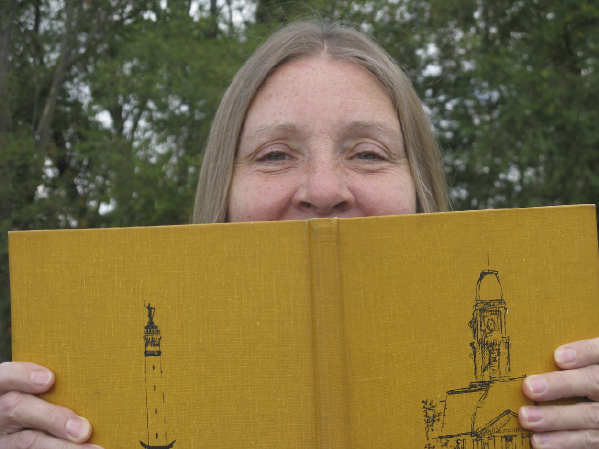The From Time to Thyme Virtual Museum

Over the years I’ve run across quite a few stories in the old newspapers that deal with people discovering, or disclosing, the existence of various items of historical significance to Hamilton County — objects that, if uncovered today, would probably end up in some museum.
In most cases, I don’t know what became of these artifacts. The newspaper articles prove they existed once, though. (Maybe someone out there knows where they are today?)
In the meantime, in order to at least preserve the memory of these little pieces of our past, I’ve created the “From Time to Thyme Virtual Museum.”
Welcome to the museum! Come on in.
The first item on exhibit this week is a key to the county’s old log jail.
(That would be the jail that preceded the Old Sheriff’s Residence and Jail that sits on the southwest corner of the courthouse square today, the current home of the Hamilton County Historical Society Museum. The old log jail was located on the northwest corner of the square.)
The May 7, 1945, Noblesville Daily Ledger reported that the handmade, six or seven inch-long key had recently been presented to Sheriff George Michelfelder by farmer Daniel Dawson.
Dawson, 88 at that time, stated that he’d acquired the key about 70 years earlier from Amasa Hess, whom he identified as a former sheriff. (Actually, Hess served as county treasurer from 1875-1877.)
Our next exhibit appeared a few days later in the May 10, 1945, Ledger.
After reading about the key to the jail, Judge Fred Hines revealed that he possessed a key to the old two-story 1837 courthouse, the one in use before the 1879 courthouse (our current “old courthouse”) was constructed.
The courthouse key was given to him by his father, Hiram Hines, a former county auditor, but the judge didn’t know where his father got the key, or how long he’d had it.
The June 23, 1881, Indianapolis News brought up another relic of the past with a Hamilton County connection.
According to the News, sometime in the 1850s workmen digging a cellar on Indianapolis’ East Market Street unearthed a handsome tomahawk decorated with “silver devices — one of which was a rising sun — and with William Conner’s name in intaglio.”
The tomahawk was thought to have been French handiwork, but how it came to be buried in Indianapolis, and how long it had been there, remains a mystery.
Next up is the 1856 Hamilton County map mentioned in the January 29, 1904, Hamilton County Ledger. This treasure was discovered in the office of then county auditor Isaac Powell.
The map included the forgotten Adams Township village of Dunbar and Shieldsville, a town located west of Atlanta (which was then known as Buena Vista,) but Olio, Aroma, Omega and Sheridan were missing and Carmel was still called “Bethlehem.”
(I’d love to know what happened to that map. As far as I know, the 1866 county map is the earliest one we have.)
Our final exhibit appeared in the September 2, 1881 Republican-Ledger.
Westfield miller John L. Semans happened to be living in Nauvoo, Illinois, in 1845 when relations between the Mormons who founded the city and their anti-Mormon neighbors turned violent.
In 1848, Semans moved to Westfield and brought with him a souvenir of the Illinois Mormon War — a cannonball.
Not long afterward, in an effort to spite his brother, Semans’ young son buried the ball in the ground somewhere.
Although multiple attempts were made to locate Semans’ souvenir, the cannonball remained lost until 1881 when some men discovered it while grading their yard.
The museum is closing now. Please move toward the exits, and remember to keep checking this space for future exhibits!
– Paula Dunn’s From Time to Thyme column appears on Wednesdays in The Times. Contact her at younggardenerfriend@gmail.com
